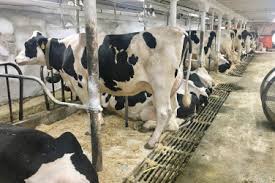Cattle production’s long history and milk production was not always the ultimate goal. Keeping cows and oxen for droughting purposes and the production of natural manure was as important as for milk and beef production even in Europe till the mid of the twentieth century.
This is the reason that quite a number of European breeds are well muscled and have sound feet and legs. Modern breeding programs combined with artificial insemination (AI) were applied in most breeds, improving milk yield and beef performance at the same time.
In Scandinavia, as well as in continental Europe, selection programs started around 1965 and replaced the former dominance of the show ring. Since these breeding programs have been quite successful, many dual-purpose breeds still exist and are under active improvement.
Farm size and cost of land are another explanation for the missing competition of beef breeds in most parts of Europe. Therefore, milk and beef are produced with the same breeds.
Read Also: Reasons why Catfish becomes Restless inside the pond: Signs, Causes and Control
Now let us discuss the two main systems of cattle production below:
1) The Traditional System of Cattle Production
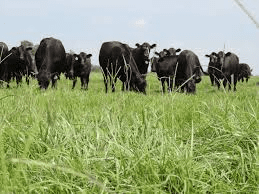
Cattle production under the traditional system is generally associated with the pastoralist transhumance which has developed over the years as an adaption to environmental and historical factors; it constitutes the main component of cattle production in the country with the pastoral Fulani as the problems of seasonal variations in forage availability, water, disease, social interaction with the arable crop farmers, government taxation demands, and the need to cater for his family.
The resulting evolution has led to a range of husbandry practices geared to overcoming these problems, particularly the availability of grazing and the need to avoid the tsetse fly transmitting trypanosomiasis.
Classification of Pastoralists
Ethnic, ecological, and factors all influence ownership and management of cattle, independently and in combination. As a result, there is an almost infinite number of permutations, but four groups can be broadly recognized:
1. Nomadic or Full Mobile Pastoralists
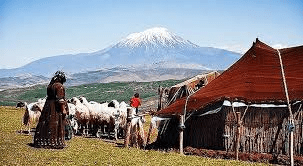
These practice pure transhumance, with no permanent place of residence and no regular cultivation. They and their families move with the herds, generally in a southward direction during the dry season and moving back during the rains.
They have an average herd of about 80-100 head of cattle together with some sheep and goats (20-40). In the search for grazing and water, areas of tsetse fly infestation and other diseases are avoided; their movement is also determined by the location of arable framing communities which provide crop residues for grazing, as well as markets for the sale of produce and purchase of essential needs.
Read Also: The Possible Market Outlet for Table Fishes
2. Semi-Nomadic or Less -Mobile pastoralists
In contrast have a permanent place of residence where the elderly members of the family stay with some of the stock, such as the lactating cows. The other stocks are moved away in search of grazing and water for long periods during the dry season.
They practice some cropping (often hiring outside labor) although livestock remains their most important economic activity. This group generally does not own as many cattle as the former group, but all their other practices are similar. Indeed, it is claimed that this is a transition stage to full sedentarization.
3. The Semi-Settled Pastoralists
These have a permanent place of abode and practice some supplementary cultivation for food production. They keep smaller herds and usually only move out in search of grazing and water towards the end of the dry season.
They sometimes construct temporary shelters, and grow and harvest crops at the beginning of the rains before moving back to their home base.
4. Settled Pastoralists
These live continuously in permanent settlements all year round and practice arable cropping in addition to livestock husbandry. Herds are grazed during the day by children or hired hands and the animals are tethered at night. Some of these look after stock for owners who live in the urban areas.
Read Also: How to Raise Ruminant Animals for Fattening, and Reproduction together
Pastoralists Management in Cattle Production
To survive in a purely nomadic system, each unity must control enough livestock to sustain itself. While many forces have led to the continual process of settlement a key factor is herd size which, either due to inheritance or disease may cease to be a viable economic unit in its own right so that recourse to cultivation is necessary for survival.
However, with allowance made for total dependence on the proceeds of livestock husbandry and the constraints of perpetual mobility, the husbandry system holds good for both nomadic and settled Fulani.
The Mobility of Cattle is a Feature of all Extensive Grazing System
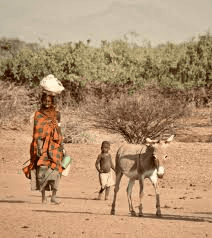
At the extreme, the pure nomads may move hundreds of kilometers and stay nowhere more than a few days while for the permanently settled, the grazing zone may be within say five kilometers of the camp. For the latter, there are three, albeit indistinct, phases in the year.
During the growing season, the herds are kept off the croplands in large units. Immediately after harvest the cattle are put in is graze crop residues; this often, but not always, by arrangement with the farmers.
As the dry season progresses the herds; are progressively subdivided for grazing, smaller units being better able to seek out and utilize small patches of grass, crop residues, etc in some areas there is a separation of the ‘wet’ animals; (cow and calves) and cows that are in an advanced stage of pregnancy, which is left behind in the ‘Mashekari’ or permanent place of adobe while the rest of the herd is moved out in search of feed.
The wet herd is grazed in areas like the fadamas (the cow plains) that have good dry season supplies of forage and water.
A close examination of the traditional pastoralist system reveals a stronger emphasis on milk production than beef and the system of management that ensures an all-year-round supply of milk from the herd.
Read Also: Nutritional Deficiency and How it affects Poultry Birds (Chickens)
Milk is a major source of income for the family’s day to day needs, and women attend markets daily to sell sour milk (nono), butter (mai) along with millet or sorghum ball (fura); the fura is sold with the nono mixed by the vendor and is consumed on the spot.
Household heads also attend the market regularly and the trading pattern leads to the natural affinity between herd movement and the location of markets and population centres.
In conclusion, it should be stressed that the general concept of the traditional grazer as a nomad who cannot settle is fast disappearing.
The picture that now emerges is that between 40-50 percent of traditional Fulani grazers are settled, another 20-30 percent are estimated to be semi-settled, whilst only about 20 percent now remain in the traditional nomadic system of production.
This is significant for it means that the often stated constraint that nomadism has on introducing technology to the cattle industry does not apply to over 50 percent of cattle owners.
2) The Modern System of Cattle Production
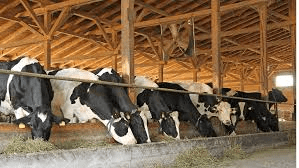
The introduction of semi-intensive and intensive methods, modeled on those successfully employed for beef and dairy production in agriculturally advanced countries, is largely confined to government, parastatals, and institutional research farms.
They commenced with the establishment of several governments livestock Improvement and breeding Centre (LIBC) in a different part of the country during the late attracted the attention of some farmers in the private sector, who, in different corporative groups or as individuals have started mixed farming enterprises.
These mixed farming operations have gained popularity amongst the educated groups (retired public servants, etc) who are taking advantage of the federal Government’s encouragement of agricultural production through the provision of guaranteed credit facilities.
Though initially influenced by the Fulani system cattle production on these units has some element of specialization into beef and milk production whereas, in the traditional system, both are complementary products of the cattle industry.
Read Also: The Best Stage to Start Raising your Catfishes (Fingerlings or Juveniles)
1. Beef Production
The establishment of beef cattle ranches has taken place mainly in the Guinea savanna zones. The ranches are stocked with indigenous cattle breeds such as the Gudali (Sokoto and Adamawa), the Bunaji, and in the more southerly areas, the tryanotolerant N’Dama has been introduced along with the Ketuku or Borgawa Cattle.
Management plans on most ranches have included the provision of extensive range grazing, sometimes undersown with legumes, with allocations of 3-4 hectares/animal in the Southern Guinea to 4-6 hectares/animal in the Northern Guinea and Savanna zones.
Some of the ranches provide improved pasture areas of about 0.125 ha/animal for dry season feeding (upper Ogun Ranch in Oyo State) or maize and grass silage also for dry season feeding and feedlot operations (Mokwa Ranch, Niger State). Mineral salts licks are provided in the paddocks and all year round watering from dams and boreholes.
Deworming and vaccination against the major cattle diseases are carried out routinely, and cattle dips are provided for control of ectoparasites, particularly ticks, some recording has been carried out but because of the inconsistency with which this has been done, it has not been very easy to utilize records in a meaningful evaluation of technical and economic performances.
A ‘Steer Fattening Unit‘ scheme was introduced for small-scale producers in the Derived Savana areas of the old Western Region in which, under a system of continuous bush grazing with adequate water supply, mineral salt licks, and facilities for tick control and the deworming possibility of profitable beef production using tryanotolerant breeds and crosses was investigated.
This idea caught on with many farmers in the area and has a number of them fatten steers for supply to a slaughterhouse in Ibadan and other urban areas. Recent successful development along these lines is the Smallholder Fattening Scheme introduced by the World Bank Assisted Livestock Project Unit (LPU).
Feedlot fattening of yearling bull steers on a commercial scale was introduced into the Nigerian beef industry about a decade ago on the Mokwa Cattle Ranch. A significant development was the introduction of sugarcane molasses from the Bacita Sugar Factory into the fattening diet in late 1972.
The fattening program was planned to coincide with the end of the sugar cane harvesting season so that large quantities of molasses would become available for feeding during the long dry season period of November to April.
The bulls and steers were purchased from the traditional herds yearly aged 18-24 months, predominantly Sokoto Gudalis cattle with some Bunajis with average weights of 200-240 kg.
They were quarantined for 30 days during which they were vaccinated for CBPP, anthrax, and prophylactic treatment with ’Berenil ’ against trypanosomiasis, as well as drenching for worms and spraying for ectoparasites.
Read Also: How to Store Fresh Fruit, Vegetables, and Herbs
Therefore they entered the feedlots with two weeks adaptation period on the molasses-based feeding regime. The group fed, each animal received approximately 3 kg molasses, 3 kg cottonseeds, 5 kg grass/maize silage plus ad libitum supply of salt licks and water.
Over a three-month fattening period, the animal average 300 kg live weight at average, daily gains 682 gm. The dressed carcasses were marketed through the cold stores and supermarkets in the urban centre of Lagos and Ibadan.
Although the records indicate substantial improvements in the physical performance of the indigenous breeds under the modern as compared to the traditional system of management, it is pertinent to note that the different models of the modern sector taken together only account for a very small percentage of the National Herd and their contributions to the beef market is therefore corresponding small.
2. Milk Production
Milk production under the system of management is confined almost exclusively to the government or institutional experimental farms. The dairies are generally located within easy marking distance of consumption centre, and attempts have been made to organize dairying countries.
Herd size varies from 30 to 50 on the experimental stations and from 50 to 200 on the urban dairies operated by various State Ministries of Agriculture.
The animals are housed, milked by hand and/or machine, and the milk is usually processed before distribution to consumers. The animals are maintained on cultivated pastures with supplementary concentrates, and standard milk recording is practiced on most farms.
Although milk production per animal under the modern has been substantially higher than that obtained by traditional producers, the results have not been very encouraging when compared with their counterparts elsewhere.
Low performance has been attributed to poor management resulting in a low pregnancy rate due to poor organization of the breeding program especially heat detection for Al, long calving intervals, short lactations, and little attention to balanced feeding in terms of concentrate or forage use. In addition, there tended to be very little selection of stock at the time of purchase.
In terms of increased milk production in their own right, the contribution of these dairies has been insignificant and they have incurred high costs and considerable manpower demands.
Although it could be argued that their roles are as research and development centre, this could be justified if their breeding and production objectives are carefully defined and satisfactorily implemented along with the generation of records from which objectives evaluation of performance can be made; in most cases, this has been the case.
Read Also: Popular Breeds of Ruminant Animals
Frequently Asked Questions
We will update this section soon.

